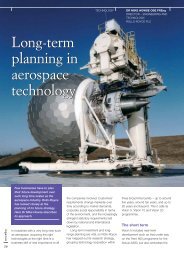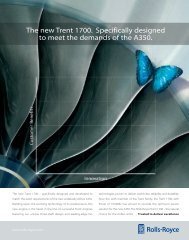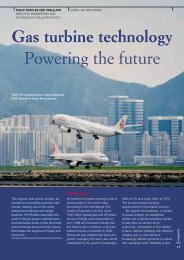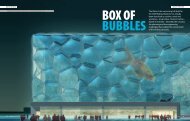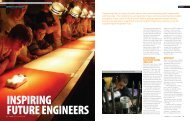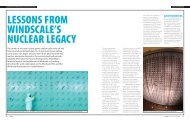Thousands of UK schools are now running after-school ... - Ingenia
Thousands of UK schools are now running after-school ... - Ingenia
Thousands of UK schools are now running after-school ... - Ingenia
Create successful ePaper yourself
Turn your PDF publications into a flip-book with our unique Google optimized e-Paper software.
AFTER-SCHOOL CLUBS<br />
SOCIETY<br />
SUPPORTING STEM TEACHING<br />
AND LEARNING<br />
The Engineering Engagement Programme run by The Royal<br />
Academy <strong>of</strong> Engineering has delivered continual pr<strong>of</strong>essional<br />
development training to over 180 <strong><strong>school</strong>s</strong> and teachers across<br />
the <strong>UK</strong>. Through this project, <strong><strong>school</strong>s</strong> have been provided<br />
with resources and activities to support and develop their<br />
engineering clubs. Teaching resources have been developed by<br />
the Academy, with activities including designing packaging with<br />
thermochromatic pigment to ensure safe food storage, making<br />
plastics from milk and devising applications for new materials.<br />
STEM activities <strong>are</strong> also developed by the Academy, exemplified<br />
by the classroom resource ‘Athlete or Machine?’ This investigation<br />
into the science, technology, engineering and mathematics behind<br />
the bob skeleton provides a truly cross-curricular activity, with realworld<br />
applications to Olympic sport. Students <strong>are</strong> challenged to<br />
design, build and test a model bob skeleton, while optimising for<br />
maximum speed and minimum aerodynamic drag.<br />
The Academy continues to develop and disseminate resources<br />
through its own networks. It also works closely with STEMNET to<br />
support and encourage STEM ambassadors to engage actively<br />
with <strong><strong>school</strong>s</strong> in delivering and developing engineering projects.<br />
A programme <strong>of</strong> working with teacher coordinators is actively<br />
developing networks with <strong><strong>school</strong>s</strong> not previously engaged with STEM<br />
activities. More information at www.raeng.org.uk/education/eenp/<br />
North London STEM Club participants extracting plastic from milk. Students<br />
heated up whole milk before adding vinegar, causing the protein caesin to<br />
precipitate out <strong>of</strong> the milk as a white solid. Caesin is a long-chain molecule,<br />
or polymer, and the students were encouraged to mould the solid into<br />
different shapes, thereby making a comparison with other plastics<br />
The approach adopted by<br />
the vast majority <strong>of</strong> clubs is to<br />
engage young people in ‘real<br />
world’ activities, <strong>of</strong>ten using the<br />
latest technologies, to build or<br />
create something that works.<br />
This has enabled thousands <strong>of</strong><br />
young people to see the study<br />
<strong>of</strong> STEM subjects as fun, exciting<br />
and relevant. Club leaders <strong>are</strong><br />
consistent in their view that<br />
projects should be based on<br />
themes or activities chosen by<br />
the students themselves and that<br />
they should be ‘hands-on’ and<br />
closely related to what they can<br />
see and experience in the world<br />
around them.<br />
Building eco-friendly<br />
buildings or ‘green’ cars have<br />
been popular choices for clubs,<br />
as has the never-ending interest<br />
in programming machines to<br />
race each other, climb over<br />
obstacles or carry out robotic<br />
tasks. Remote-controlled<br />
cars, jitterbugs and buggies<br />
<strong>are</strong> commonplace, while<br />
rockets continue to fire the<br />
imagination. In a nod to the<br />
television programme Scrapheap<br />
Challenge, at least one club has<br />
built go-karts from old bicycle<br />
frames. Some clubs have<br />
gone even further combining<br />
‘classroom’ projects with a wider<br />
interaction with their <strong>school</strong> or<br />
local community based on ideas<br />
related to medicine, health, and<br />
consumer products, such as<br />
clothing.<br />
BUILDING<br />
CONTROLLABLE<br />
DEVICES<br />
One major advance in recent<br />
years has been the availability <strong>of</strong><br />
cheap programmable devices<br />
that allow students to design<br />
and make devices that produce<br />
computer-controlled movement.<br />
These allow pupils to experience<br />
the concept <strong>of</strong> a programming<br />
language and how logic may<br />
be used to structure a series<br />
<strong>of</strong> commands that control<br />
mechanical devices.<br />
Controlling movement in<br />
a machine can be achieved<br />
using a simple Peripheral<br />
Interface Controller (PIC) or more<br />
advanced microprocessors.<br />
Microchips <strong>of</strong>fer a useful<br />
introduction to programming<br />
without the need for expensive<br />
computer suites. To make things<br />
easier, a range <strong>of</strong> commercially<br />
supplied kits <strong>are</strong> <strong>now</strong> readily<br />
available, comprising simple<br />
programmable devices with<br />
s<strong>of</strong>tw<strong>are</strong> for as little as £2 each.<br />
School clubs <strong>are</strong> also able<br />
to purchase reasonably priced<br />
microcontroller systems that<br />
help with an introduction to<br />
programming. PICAXE is a<br />
<strong>UK</strong>-sourced system based on<br />
a standard PIC microcontroller<br />
chip. Arduino is an opensource<br />
(free to use and develop)<br />
single-board microcontroller.<br />
Both systems <strong>are</strong> designed to<br />
make the process <strong>of</strong> controlling<br />
electromechanical devices more<br />
accessible to people with limited<br />
or no programming experience.<br />
Schools also reported using the<br />
GENIE 8-pin microcontroller<br />
system, the Micros<strong>of</strong>t .NET<br />
Gadgeteer open-source toolkit<br />
and Lego Mindstorms.<br />
The next stage is to consider<br />
more sophisticated systems<br />
such as the $25 Raspberry Pi,<br />
a credit-card-sized computer<br />
that can connect a television<br />
monitor, keyboard and other<br />
peripherals via a USB hub.<br />
Despite its small size, each unit<br />
packs considerable processing<br />
power and can be used as part<br />
<strong>of</strong> a toolkit for young people<br />
interested in learning about<br />
IMAGINEERING CLUBS<br />
Imagineering Clubs provide<br />
hands-on activities for one<br />
hour a week throughout the<br />
academic year to groups <strong>of</strong><br />
around 12 pupils. Most <strong>of</strong><br />
these out-<strong>of</strong>-<strong>school</strong> clubs<br />
<strong>are</strong> run by engineer tutors,<br />
providing real-life experiences<br />
<strong>of</strong> engineering. Offering a<br />
sustained programme <strong>of</strong><br />
development throughout the<br />
academic year, sitting alongside<br />
the National Curriculum, they<br />
cover subjects as diverse as<br />
electricity, magnetism, flight<br />
and measurement. Where<br />
possible, the youngsters <strong>are</strong><br />
taken on visits to factories and<br />
other engineering facilities to<br />
experience modern engineering<br />
and technology in action.<br />
Bob Young is a retired<br />
engineer and volunteer tutor<br />
at a long-<strong>running</strong> Imagineering<br />
Club at St Richard’s Church <strong>of</strong><br />
England First School in Evesham,<br />
Worcestershire. He finds that as<br />
well as gaining practical skills,<br />
the children <strong>are</strong> able to grasp<br />
how things work and the science<br />
and technology behind each<br />
model. The youngsters learn to<br />
read drawings, use checklists,<br />
organise their work surfaces and<br />
the disciplines associated with<br />
these activities, gaining personal<br />
confidence and a sense <strong>of</strong><br />
achievement by learning through<br />
this practical experience.<br />
Elizabeth Spencer, Head<br />
Teacher at St Richard’s, says that<br />
the involvement with engineers<br />
and the opportunities for the<br />
pupils to visit engineering works<br />
has also proved beneficial with<br />
pupils gaining in confidence<br />
and becoming enthusiastic<br />
about engineering as a result.<br />
More information at<br />
www.imagineering.org.uk<br />
A youngster at an Imagineering Club at St Richard’s Church <strong>of</strong> England First School in Evesham constructs a Morse key<br />
and buzzer using simple tools and learns the principles <strong>of</strong> electro-magnetism through practical experience<br />
© The Imagineering Foundation<br />
2 INGENIA INGENIA ISSUE 50 MARCH 2012 3



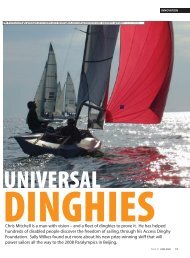


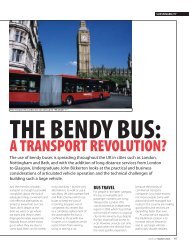
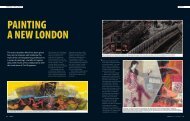
![[322/03] Francke - Ingenia](https://img.yumpu.com/23411337/1/184x260/322-03-francke-ingenia.jpg?quality=85)

